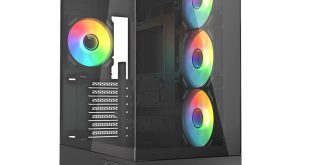
Today we are going to look at the PC-Q30 which is one of the latest Mini ITX cases from Lian Li. We have looked at a number of compact cases from Lian Li in the past and have been generally very impressed with what they have to offer. This particular model has a very unusual design which features a large curved window in the front of the chassis.
Lian Li are one of the longest established premium case manufacturers and boast a massive range of all-aluminium cases. This encompasses everything from full-tower enthusiast models to tiny HTPC cases like the one we are testing today. We are excited to see how the PC-Q30 fares in our tests!
Features:
- Dimensions: 223 x357 x 300 mm
- Material: Aluminum
- Weight: 2.13 kg
- Hard Drive bays: 4x 2.5″
- Expansion Slots: 2
- Motherboard: Mini-ITX, Mini-DTX
- System Fan (Rear): 140mm Fan x1
- I/O Ports: USB 3.0 x 2 / HD Audio
- Maximum Compatibility VGA Card length: 200mm
- PSU length: 125mm
- CPU cooler height: 130mm
- PSU: SFX PSU (Optional)
 KitGuru KitGuru.net – Tech News | Hardware News | Hardware Reviews | IOS | Mobile | Gaming | Graphics Cards
KitGuru KitGuru.net – Tech News | Hardware News | Hardware Reviews | IOS | Mobile | Gaming | Graphics Cards




Absolutely beautiful, but I would be concerned about the discrete graphics card space. what is the maximum room in there for a GPU?
This or Bitfenix Prodigy? decisions, decisions. what do you guys think?
Funky! I’ve just ordered one, I’ll see if it fits in the living room :)… The drawback is the ports backplate facing upward the chassis. When all is wired it will have an different look, a somewhat “techno-sculpture” : with phosphorescent Water cooling tubing it could get that ugly… Maybe I’ll try to put an aluminum cover on top, perpendicular to the front panel’s curvature at that point (parallel to the ports backplate), maybe also on the sides so as to somewhat enclose and hide the backport (which would also protect the ports and wire headers). Bah I’ll see, It ‘l be as it goes!